- Learning time
- 30 minutes
- First play time
- 120 minutes
In the Hall of the Mountain King
Designed by: Graeme Jahns,Jay Cormier
In the Hall of the Mountain King looks, at first glance, like a game of combat where the last one standing is the king. But it’s actually more political in it’s theme, and more puzzly in how it plays. You’re not fighting; instead, you are friendly rival trolls, all staking your claim in your ancestral home (-the mountain) by digging tunnels and halls, and erecting pedestals and statues. Those antics are pretty much all you score points for, and the troll with the most points is named king. Here’s how it works:
The board shows the mountain itself, broken into a grid. Each player begins with an entrance somewhere on the board, four trolls in their possession – your trolls form a ‘trollsmoot’ – and a handful of resources: more on those in a moment.
On every turn, your choice is simple. You can either dig a tunnel, or recruit a troll. Simply put, recruiting gets you resources, and digging spends them. When you recruit, you take one of the face-up trolls from a communal tableau of troll cards, and add it to your trollsmoot: note that your trolls must form a pyramid, so every troll is supported by two beneath it. The just-recruited troll will bring some resources with it, but – if there are no resources on the cards already – it will also cause a ‘cascade’ – any trolls beneath it also ‘fill up’ with the resources on the cards. Some trolls are free to recruit; the better trolls cost you money – the tableau is also a pyramid, with the more alluring recruits at the top, and to reach them each troll beneath must be paid a coin.
Coins are one resource, then. What are the others, and what are they used for? Well, three are for constructing tunnels: stone, iron and heartstone can all be used to pay for a digging action. The only difference between them is how many points you score for the tunnel, with the rarer heartstone better than iron, and the common stone a little cheaper. Tools are used to clear blocked areas in the mountain, but you can wiggle around them: having paid the resource in question, you place a tunnel on the map, scoring points and hoovering up any resources you ‘discover’ en route. All your tunnels must connect, and each player’s tunnel network is distinct. If you hollow out a big enough space, you can turn it into a great hall – worth plenty points at the end of the game, particularly if they have a statue in them.
You find statues buried in the mountain and can move them using one of the games’ other resources: carts. Where you place a statue in your network – assuming you move it at all – will affect how many points it scores at the end of the game. Statues put on pedestals are worth more, because that’s what trolls like.
The final resource is magic, which can be spent on spells. There are always three available during the game and the do a variety of things; none of them are absolutely necessary to play the game, but clever use of them can be necessary to win it – ignore them at your own risk! The end of the game is triggered when anyone completes their trollsmoot (ie they place their final troll on top of their two top trolls) and the final scores are tallied.
The guru's verdict
-
Take That!
Take That!
It's possible, especially with more players, to get blocked off from parts of the board or beaten to the punch on snaffling up a statue. But there's no direct combat or anything like that.
-
Fidget Factor!
Fidget Factor!
High on that first play, dropping considerably with familiarity. That said, it's not a game where decisions are always that simple. What keeps it moving forward is...
-
Brain Burn!
Brain Burn!
...usually, your basic turn is either recruit, or dig. If you're laden with resources, you probably want to dig. If they're scarce - recruit. Around that simple heart the spells, the varied trolls, and the indirect interaction on the board with it's available goodies (resources, statues) bring a lot of extra nuance and depth.
-
Again Again!
Again Again!
Lots of variety here around that straightforward dig/recruit heart.

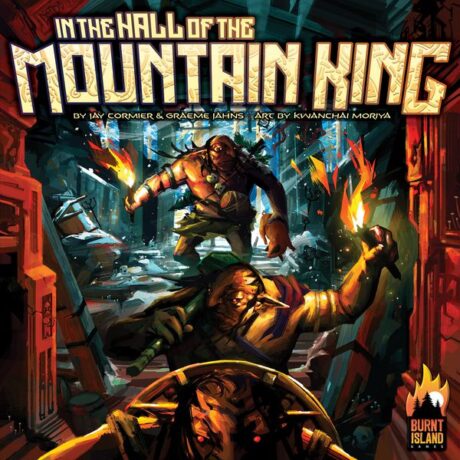
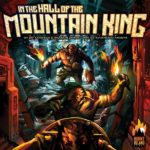
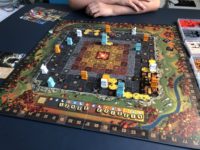
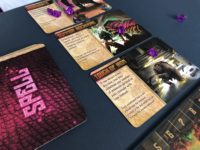
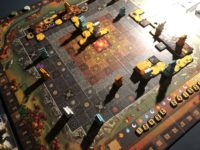


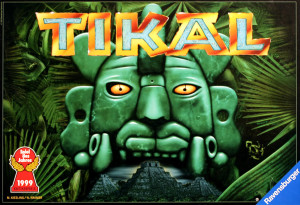

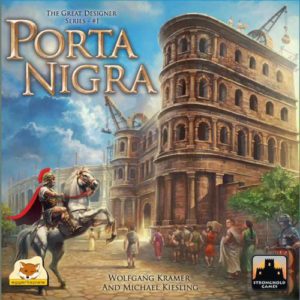
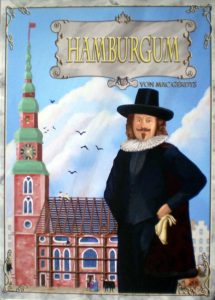
Sam says
Far less crazy and intricate than it first appears (and sounds), In the Hall of the Mountain King won me over despite the bizarre narrative idiosyncrasies of how it plays. Build the best tunnels, yes: I get that. Why are my trolls forming a pyramid though? Why, when I get a good troll to join me, do I bribe the trolls that didn't join? It's thematically ludicrous, and clearly only set up that way to facilitate the cascading of resources. But hey - that cascading is fun. Who doesn't like a cascade? And the fact you want to use up all of your stuff before recruiting/cascading again is a puzzler too. These trolls aren't fighters: they're planners, strategists and tacticians. They probably do Suduko on their tea-break, after they've finished demonically cackling. There's some slightly fiddly rules around scoring pedestals and statues, but really, when I saw the box I anticipated yet another game of tribal fantasy combat - and In the Hall of the Mountain King is less derivative than that; more about finding the right path in a both literal and figurative manner. If you yearn to swing your axe in battle, this probably isn't the one. But if you enjoy the satisfaction of being the shrewdest of shrewd town-planners in ye olde world, then play on!